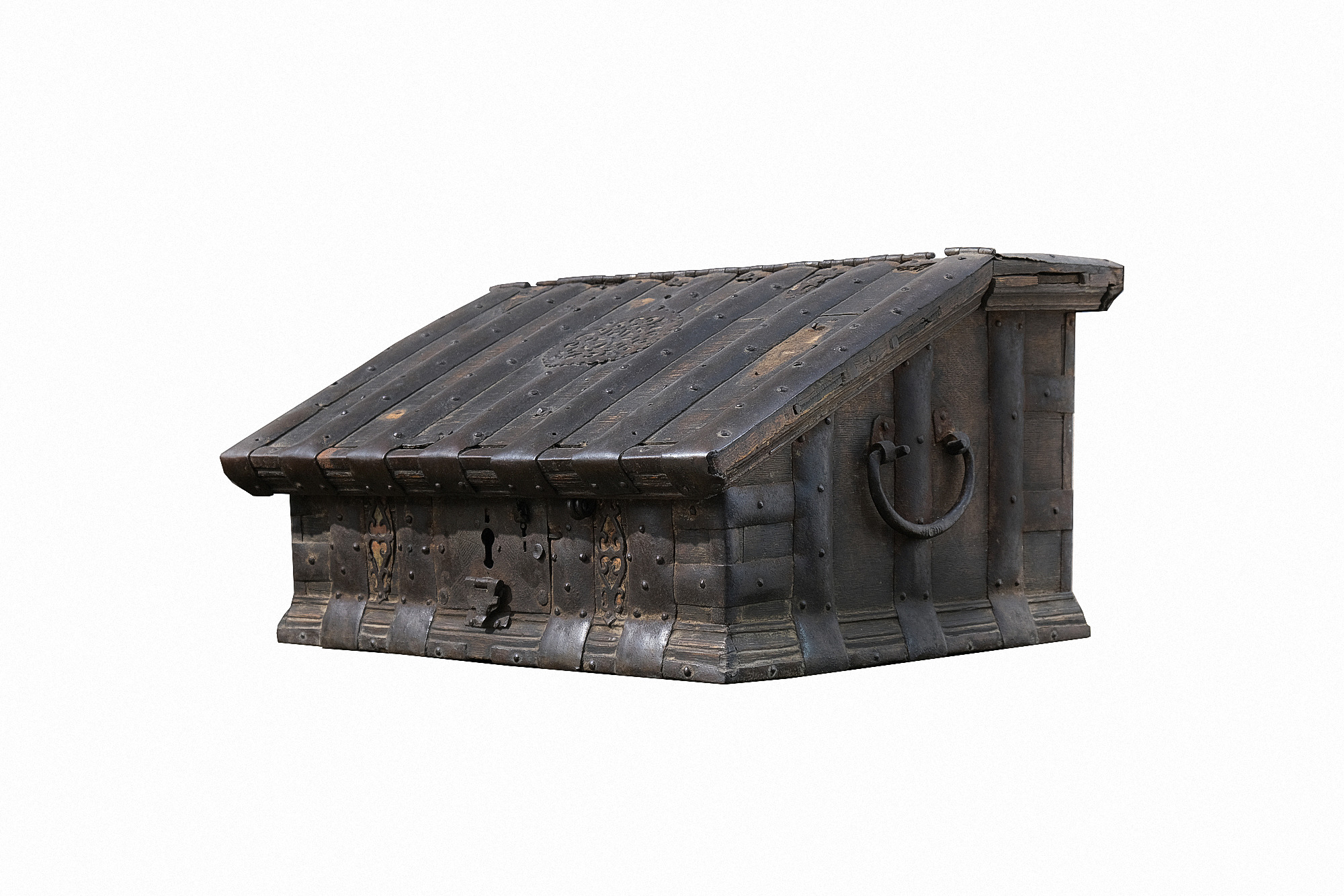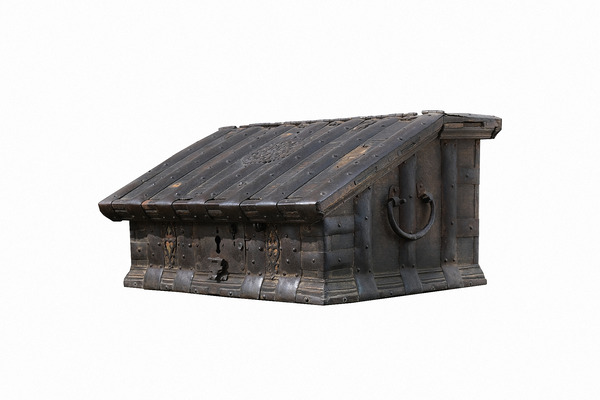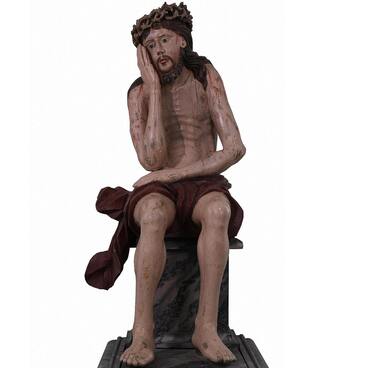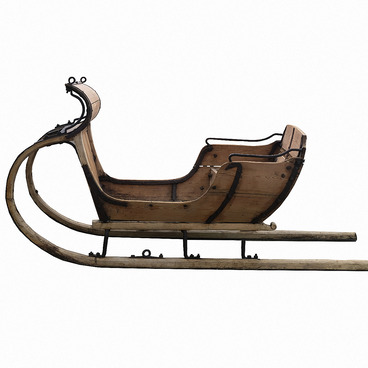In Ancient Rus, chests were considered indispensable household items. Their different types served a variety of needs: some could be slept on, some were used for storing clothes, and others contained valuables during travel. To avoid the theft of valuables while the traveler was sleeping, special small chests were used that could be placed under the head — this type was called a podgolovnik (under-the-head) chest.
The sides of the lid of such a box were different: at the back, it remained horizontal, while gradually inclining towards the front edge. This design allowed putting a pillow on the oblique part to fall asleep soundly and not be afraid of robbers. The chest was additionally locked with a key. Expensive chests had a built-in lock or even a secret mechanism, while cheaper ones were usually equipped with a padlock.
Podgolovnik chests were popular among all social groups: they could be found in country and town houses, as well as noble households. Similar products could be seen even in the royal manors. Kargopol merchants and burghers also bought such chests at fairs. The museum’s collection includes several podgolovnik chests, which indicates their popularity among the residents of Kargopol.
The process of making the chests was quite simple. Usually, artisans assembled the main part from wood and bandered it. Often items were decorated with plaques. The chest from the Kargopol History, Architecture and Art Museum has a quite modest appearance: it is bandered and decorated with several metal plaques with a perforated pattern. Usually, openwork slits in metal plates were made with a special tool — an embossing die.
In the 16th — 17th centuries, there were several large centers of chest production in Ancient Rus. The products made in Vologda, Veliky Ustyug and Kholmogory were considered to be the best ones. The exhibit from the museum’s collection was made in Veliky Ustyug. Most likely, the shape for the headrest was borrowed from English merchants, considering that at that time the trade between Russia and England was booming.
The sides of the lid of such a box were different: at the back, it remained horizontal, while gradually inclining towards the front edge. This design allowed putting a pillow on the oblique part to fall asleep soundly and not be afraid of robbers. The chest was additionally locked with a key. Expensive chests had a built-in lock or even a secret mechanism, while cheaper ones were usually equipped with a padlock.
Podgolovnik chests were popular among all social groups: they could be found in country and town houses, as well as noble households. Similar products could be seen even in the royal manors. Kargopol merchants and burghers also bought such chests at fairs. The museum’s collection includes several podgolovnik chests, which indicates their popularity among the residents of Kargopol.
The process of making the chests was quite simple. Usually, artisans assembled the main part from wood and bandered it. Often items were decorated with plaques. The chest from the Kargopol History, Architecture and Art Museum has a quite modest appearance: it is bandered and decorated with several metal plaques with a perforated pattern. Usually, openwork slits in metal plates were made with a special tool — an embossing die.
In the 16th — 17th centuries, there were several large centers of chest production in Ancient Rus. The products made in Vologda, Veliky Ustyug and Kholmogory were considered to be the best ones. The exhibit from the museum’s collection was made in Veliky Ustyug. Most likely, the shape for the headrest was borrowed from English merchants, considering that at that time the trade between Russia and England was booming.



